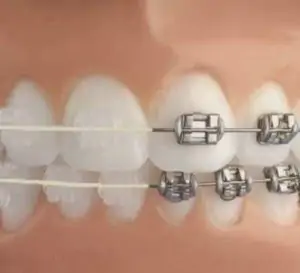
Braces for Adults | Dental braces which are also called “braces” are available for individuals of various age groups. Starting from the small kid to an elderly individual, braces are of various types. These braces bring the teeth in their natural position and proper arch form. Braces which provide them confidence in the whole time period as well as do their function well for the teeth. Dental braces can also be used along with other orthodontic appliances for palate and jaws. Thus, overall basis braces play a very important role in improving the cosmetic appearance of the individual.
In recent times, there are various types of braces made for the adults, so as to fit the requirements of every individual. After the proper evaluation by the dentist, proper orthodontic treatment is provided to the patient. Here are some reasons when an orthodontist or a dentist will advise an adult patient for braces:
- Crooked teeth
- Crowded teeth
- Overbite and underbite
- Incorrect jaw position
These orthodontic problems can lead to:
- Gum Diseases
- Tooth decay or dental caries
- Headaches
- Earaches
There is a time difference in the total treatment plan of an adult orthodontic patient. An adult patient will have longer treatment duration than that of a kid. The time period takes an average of1.5 to 2 years. After the removal of the braces by the dentist, the individual is asked to wear a retainer so as to maintain the results if the treatment.
The braces for adults are of four types:
-
Metal braces:
These are the most common braces and, most commonly preferred by the patients.
-
Lingual braces:
These braces are fixed from the lingual side to ensure cosmetic to the teeth appearance.
-
Clear ceramic braces:
They are fixed in the front of the teeth. But they blend with the color of the teeth, thus making them less visible.
-
Invisible braces:
These are the most advanced dental braces available. They provide transparency to the braces thus ensuring best comfort to the patient.
A proper brushing and oral hygiene regime are provided to the patients undergoing braces treatment. Food lodgment is a common problem faced by individuals with braces. So precautions are taken to avoid any kind of difficulty with the braces and make the treatment success for the patient as well as the dentist.
Read other articles:
